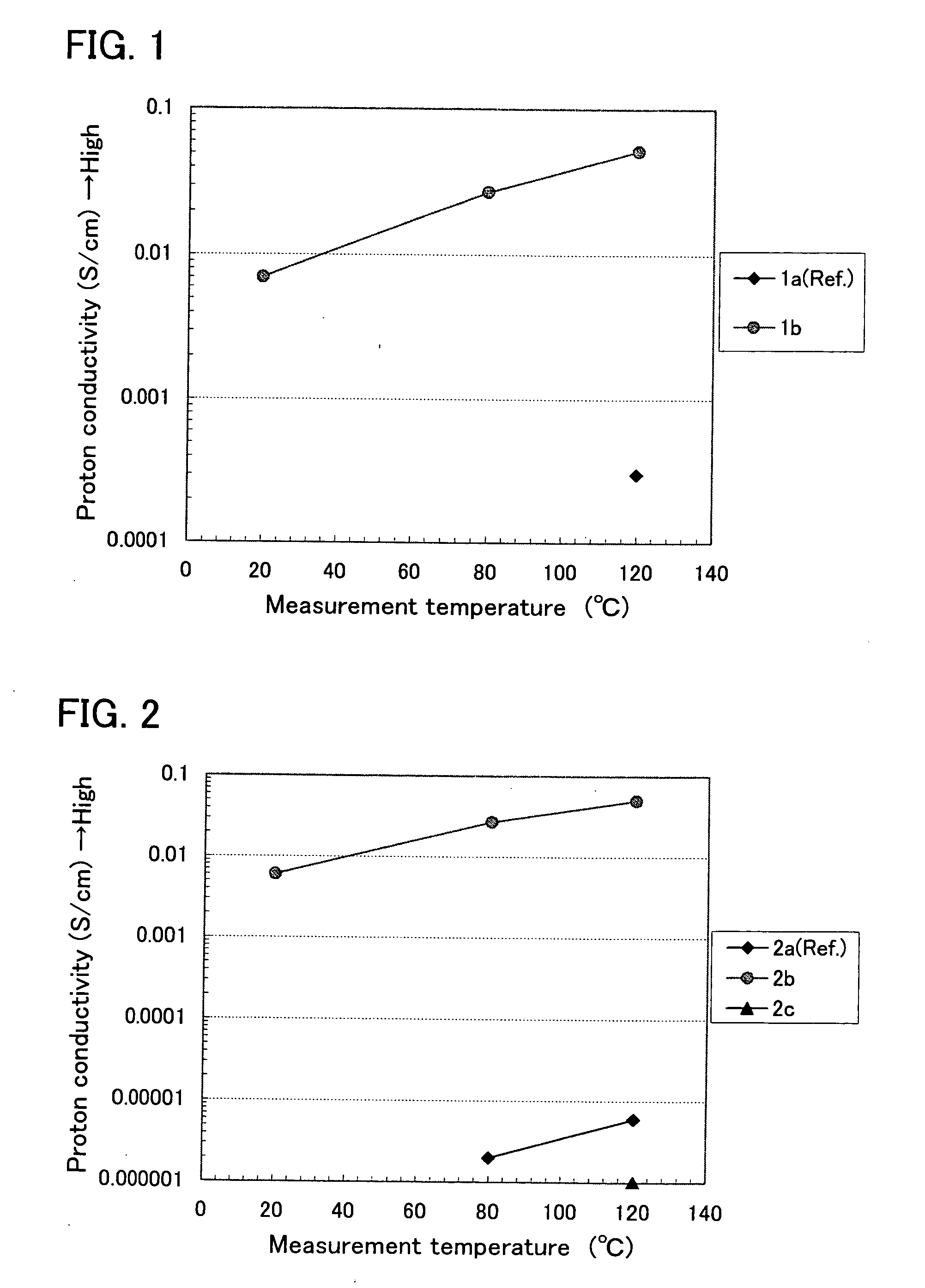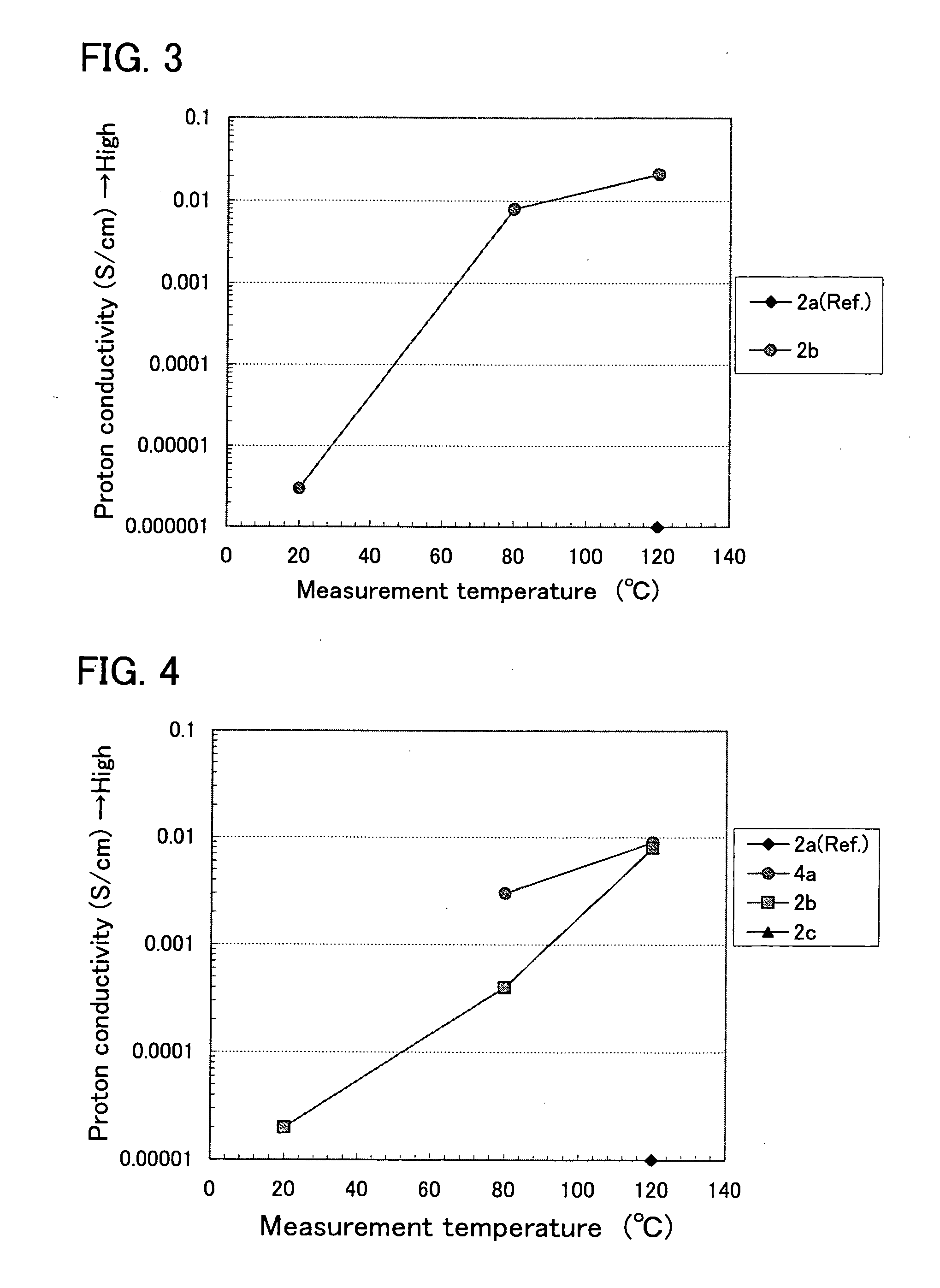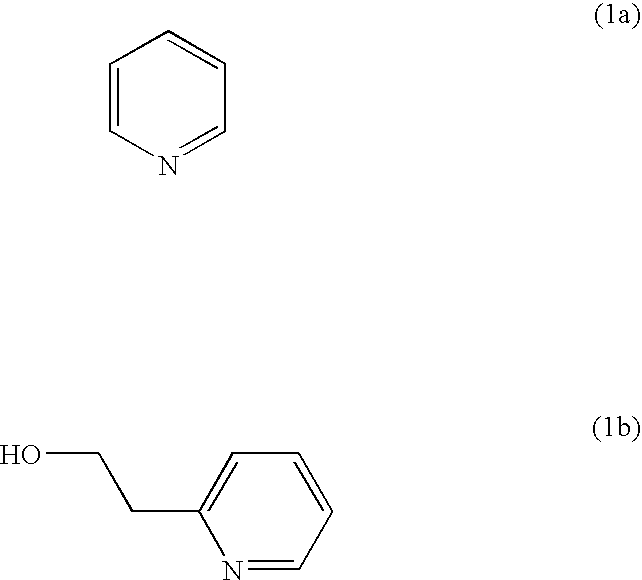Electrolyte material for fuel cell
a fuel cell and electrolyte technology, applied in the field of electrolyte materials, can solve the problems of difficult to obtain a good proton conductivity in a temperature range more than 100° c, difficult to control moisture, and the development of the proton conductivity in a humidified environment, etc., to achieve high proton conductivity, easy moisture control, and remarkable improvement of the proton conductivity
- Summary
- Abstract
- Description
- Claims
- Application Information
AI Technical Summary
Benefits of technology
Problems solved by technology
Method used
Image
Examples
example 1
[0050] A mixture of pyridine (1a) and methanesulfonic acid (CH3SO3H) was prepared (the mixing ratio was 1:3), and the conductivities were measured at each temperature, 20° C., 80° C. and 120° C. As the result, the conductivities at 20° C. and 80° C. were below a lower limit of the measurement (−4 S / cm.
[0051] In the case of using a mixture (the mixing ratio was 1:3) of methanesulfonic acid and 2-(2-hydroxyethyl)pyridine (1b) in which a hydroxyethyl group (—CH2CH2OH) is added to pyridine, instead of using the pyridine, it was observed that the conductivities were remarkably improved at all measurement temperatures. Specifically, the conductivity was 0.007 S / cm at 20° C., and the conductivities at 80° C. and 120° C. were 0.027 S / cm and 0.052 S / cm, respectively. These measurement results are shown in FIG. 1.
[0052] Namely, the conductivity was improved more than 100 times by using the compound (1b) in which a hydroxyethyl group is added to the pyridine (1a).
example 2
[0053] The results of the conductivity measurements are shown in Table 1 and FIG. 2, in respective cases that imidazole (2a), 2-methylimidazole (2b), in which a methyl group (—CH3) is added to imidazole, and benzimidazole (2c), in which a benzene ring is condensed to an imidazole ring, were mixed with methanesulfonic acid, respectively (the respective mixing ratios were 1:3).
TABLE 1Conductivities (S / cm) of mixtures at each temperatureTemperatureMixture20° C.80° C.120° C.imidazole + methanesulfonic acidND2 × 10−66 × 10−62-methylimidazole + methanesulfonic0.0060.0270.050acidbenzimidazole + methanesulfonic acidNDND1 × 10−6
[0054] In this case, owing to adding the methyl group, the conductivity was improved about 10000 times. However, in the case of benzimidazole, the conductivity was similar to or less than that of imidazole having no functional group. It is important that the number of atoms (other than H atom) of the functional group to be added is 3 or less.
[0055] Furthermore, in ...
example 3
[0056] The results of the conductivity measurements are shown in Table 2 and FIG. 3, with regard to a mixture (the mixing ratio was 1:1) of imidazole (2a as described above) and ethanesulfonic acid (CH3CH2SO3H), and a mixture (the mixing ratio was 1:1) of 2-methylimidazole (2b as described above) and ethanesulfonic acid, respectively.
TABLE 2Conductivities (S / cm) of mixtures at each temperatureTemperatureMixture20° C.80° C.120° C.imidazole + ethanesulfonic acidNDND1 × 10−62-methylimidazole + ethanesulfonic3 × 10−60.0080.021acid
[0057] In this case, owing to adding the methyl group, the conductivities were improved more than 4 digits (more than 104 times).
PUM
 Login to View More
Login to View More Abstract
Description
Claims
Application Information
 Login to View More
Login to View More - R&D
- Intellectual Property
- Life Sciences
- Materials
- Tech Scout
- Unparalleled Data Quality
- Higher Quality Content
- 60% Fewer Hallucinations
Browse by: Latest US Patents, China's latest patents, Technical Efficacy Thesaurus, Application Domain, Technology Topic, Popular Technical Reports.
© 2025 PatSnap. All rights reserved.Legal|Privacy policy|Modern Slavery Act Transparency Statement|Sitemap|About US| Contact US: help@patsnap.com



